Creating high-quality, helpful content that drives search traffic is more important than ever.
There’s nothing worse than pouring your heart and soul into a wonderful guide or blog post that nobody ever sees or churning out pieces with little value that disappoint or alienate your potential audience.
Standing out from the crowd requires a delicate balance between optimizing content for search and creating pieces that truly resonate with users.
This comprehensive guide will walk you through the essential steps to achieve this balance, ensuring your content ranks well and provides genuine value to your audience.
Follow along and check off each step as you go to create content that both search engines and readers will love.
Step 1: Optimize your content strategy for search
Your SEO and content strategy should complement each other. Leaning too heavily on one or the other could impact your share of organic traffic, so a balanced approach is best for optimal search engine results.
Content marketing is a competitive game, so you must also ensure your piece is memorable or “sticky.” A great way to review this is by using the “Made to Stick SUCCESS model” to ensure your content has as many of these traits as possible:
- Simple.
- Unexpected.
- Concrete.
- Credible.
- Emotional.
- Stories.
High-quality, helpful content:
- Understands your audience but takes search data into account: At its heart, great content is written for people but also performs well in search, helping your audience discover it. Here are some tips on writing for people and search engines.
- Helps the reader complete one specific task: Be thorough yet focused. If you find there’s too much to say, consider creating a hub and spoke model with a series of interlinked articles.
- Connects with other content: Consider how a planned topic relates to the content you have already created or other pieces you plan to create.
- Guides your readers toward an action: Consider the place in the user’s journey you’re supporting and guide them appropriately.
- Is sticky: How will your content be remembered by your audience? Does it have some striking or unusual elements that help it to stick in people’s minds?
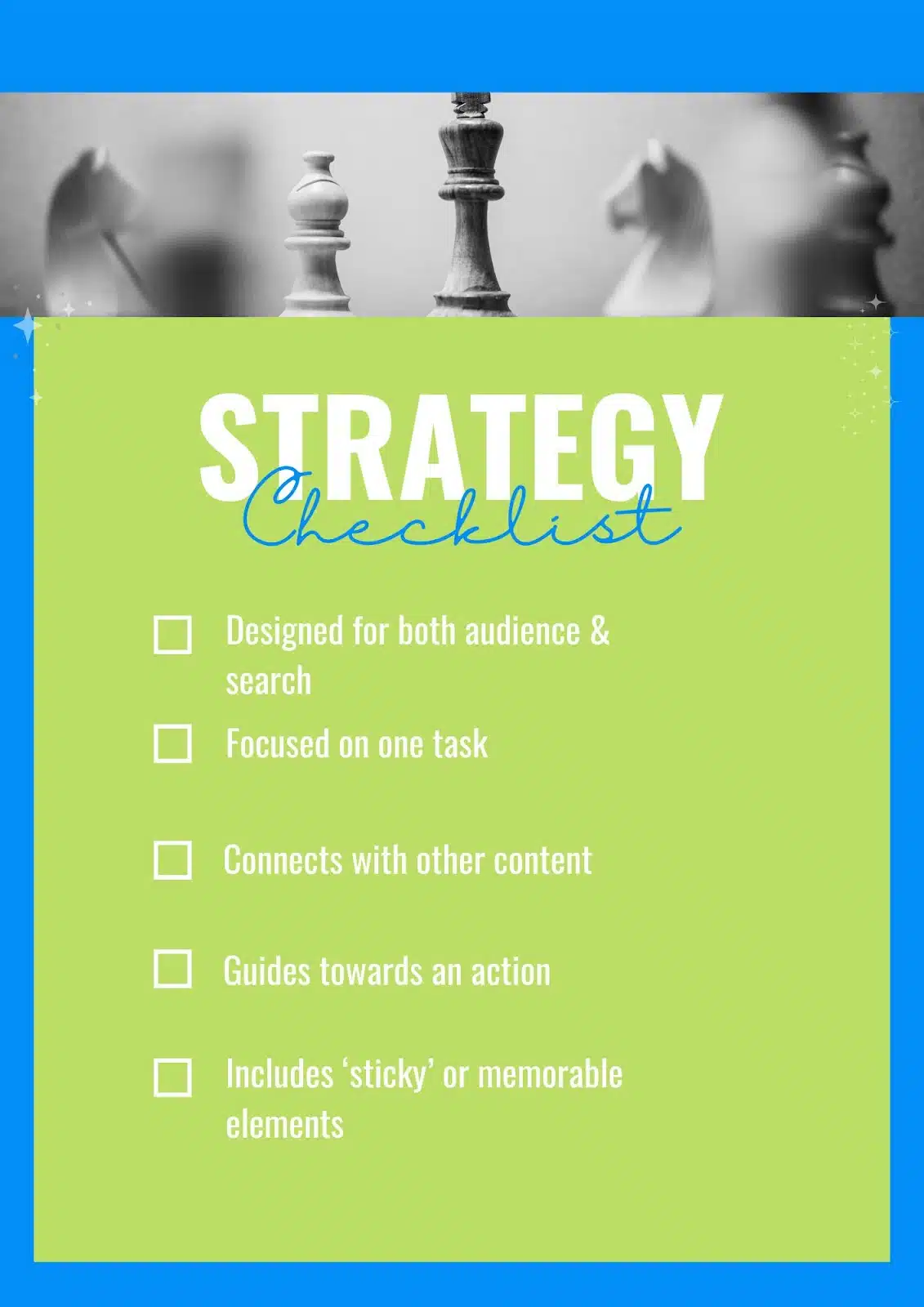

Step 2: Research and design helpful content
SEO is only successful with thorough research, which should help shape your ideas before you start creating content.
It’s important to go beyond search volume, using data to help you better understand your target audience.
Before you start to write content for search engines or users, you should carry out:
- Keyword research: Understanding the search queries that relate to your topic can help you learn about your audience and also give your search engine marketing a solid foundation.
- Audience research: What are your users’ pain points and challenges? What does their journey look like? There are various ways to understand the people you are creating for, but keeping them at the forefront of your mind when creating content is important.
- User intent analysis: Creating content that doesn’t match the search intent will likely set you up for failure. Understand what users are looking for before you begin, and make sure you are fulfilling their needs.
- Entity research: On-page SEO is more than just keywords. It involves understanding the connections related to your topic to improve search results.
- Content gap analysis: checking where your website or piece of content is lacking compared to the competition is a really useful market research exercise.
- A review of the helpful content guidelines: Follow Google’s guidelines for creating helpful, reliable content. The better you understand what search engines want, the more likely you will succeed.
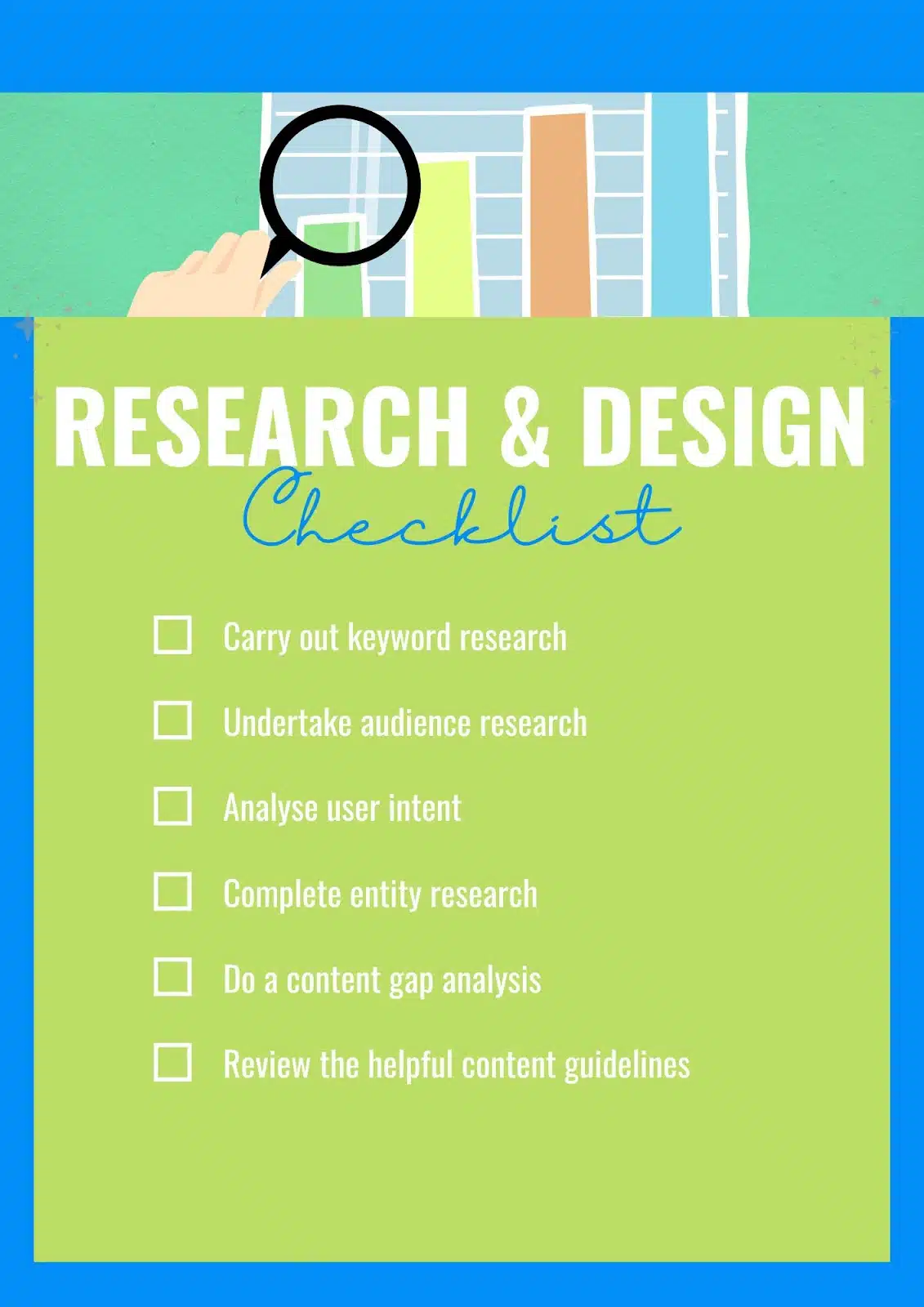

Step 3: Human vs. AI content generation
AI isn’t a shortcut to writing content, and high-quality content always needs a human touch. Most of today’s content likely uses both humans and AI as part of the process, and a combined approach can be effective.
If you have used AI during your content creation process, you should:
- Personalize and humanize: Make sure it has a human touch. Add some personal experience, unique perspectives and even emotional content where suitable. Find out how to make your AI content sound more human.
- Fact-check: AI is programmed on data and writes based on common patterns rather than information accuracy. It can’t yet verify its claims, so it’s crucial to fact-check any content you’ve generated with AI. It could risk your or your company’s reputation if you publish incorrect information.
- Check for bias: Thoroughly review your content for any bias that may have been introduced by the use of AI.
- Review for overuse of keywords or certain phrases: AI-generated content often repeats certain phrases and keywords. This can affect the overall feel of your content, making it appear mechanical to readers and hampering its chances of success.
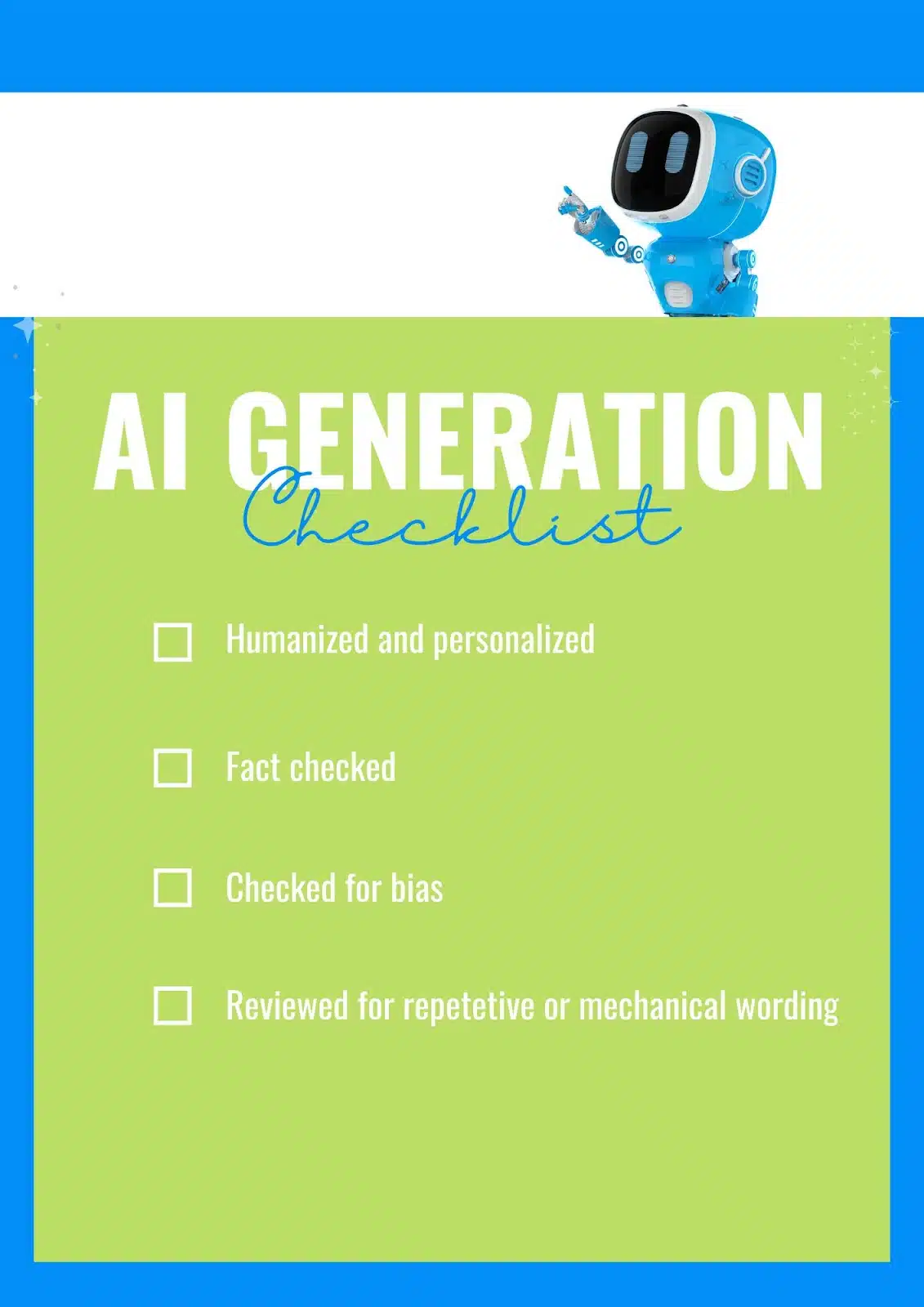

Step 4: Create correct, accessible and readable content
When you’re working on content, there are some basics that shouldn’t be ignored. Good spelling, grammar and readability are a must.
Helpful content of a high standard should always be:
- Free of spelling and grammatical errors: While spelling mistakes and errors won’t directly affect your chances of ranking, they will erode trust and credibility. It’s important to proofread and get others to check your work too.
- Easy to follow and read: This helps users and also makes your content more search engine-friendly. Search engines read by parsing text and complicated sentence structures can lose their meaning because they are more difficult to process.
- Structured well: Content should make appropriate use of headings and formatting. This will help skim readers find the information they’re looking for quickly and easily. It’s also helpful for those using screen readers, making sure it remains accessible to all.
- Enticing to click on: Don’t forget about the title tag and meta description. While meta descriptions aren’t a ranking factor, they are a key area to help your content stand out in the search engine results pages.
- Up to date: Ensure your information, statistics and references are current to keep your content relevant.
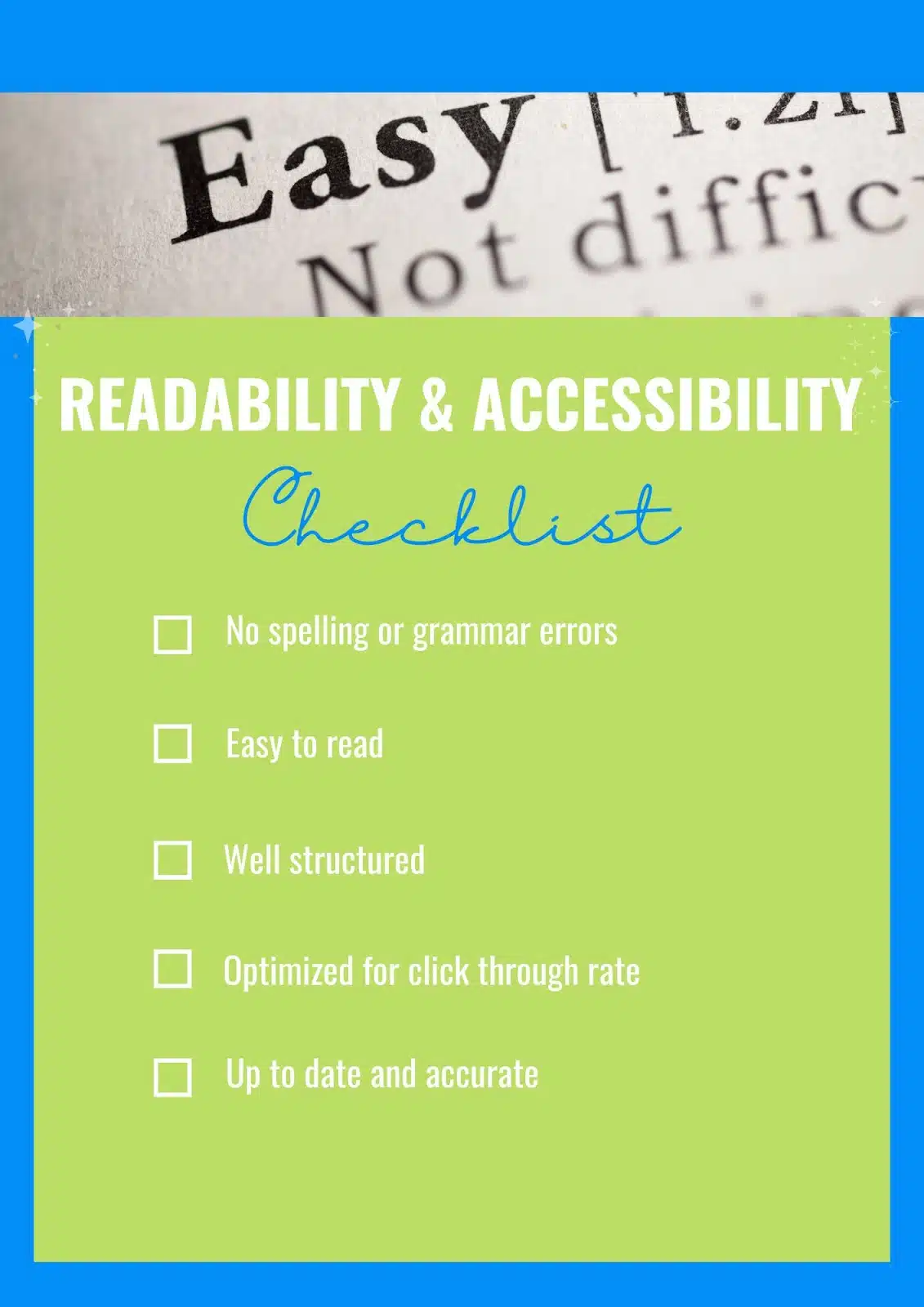

Get the newsletter search marketers rely on.
Step 5: Keyword and entity usage
If you’ve followed the steps above, you’ll be armed with a content plan based on research and many relevant keywords. But you can still fall into common traps, like focusing too much on a primary keyword or overusing search terms.
Helpful, great quality website content should:
- Make natural use of keywords: Try not to overuse your target keyword. Avoid keyword stuffing by aiming for natural use. If a word or phrase doesn’t feel right, don’t try to make it work.
- Include synonyms and close variants. There are many different ways of saying the same thing. Using equivalent words can make your writing more varied and interesting and avoid repetition.
- Include related terms: Every topic includes a series of related keywords frequently used together. This frequency of use helps to contextualize which in turn helps search engines understand your meaning.
- Use key entities and related entities: The “things” related to your topic can help you create a more accurate, complete or well-rounded web page. Entity SEO helps search engines by providing context and disambiguation, helping you to optimize content effectively.
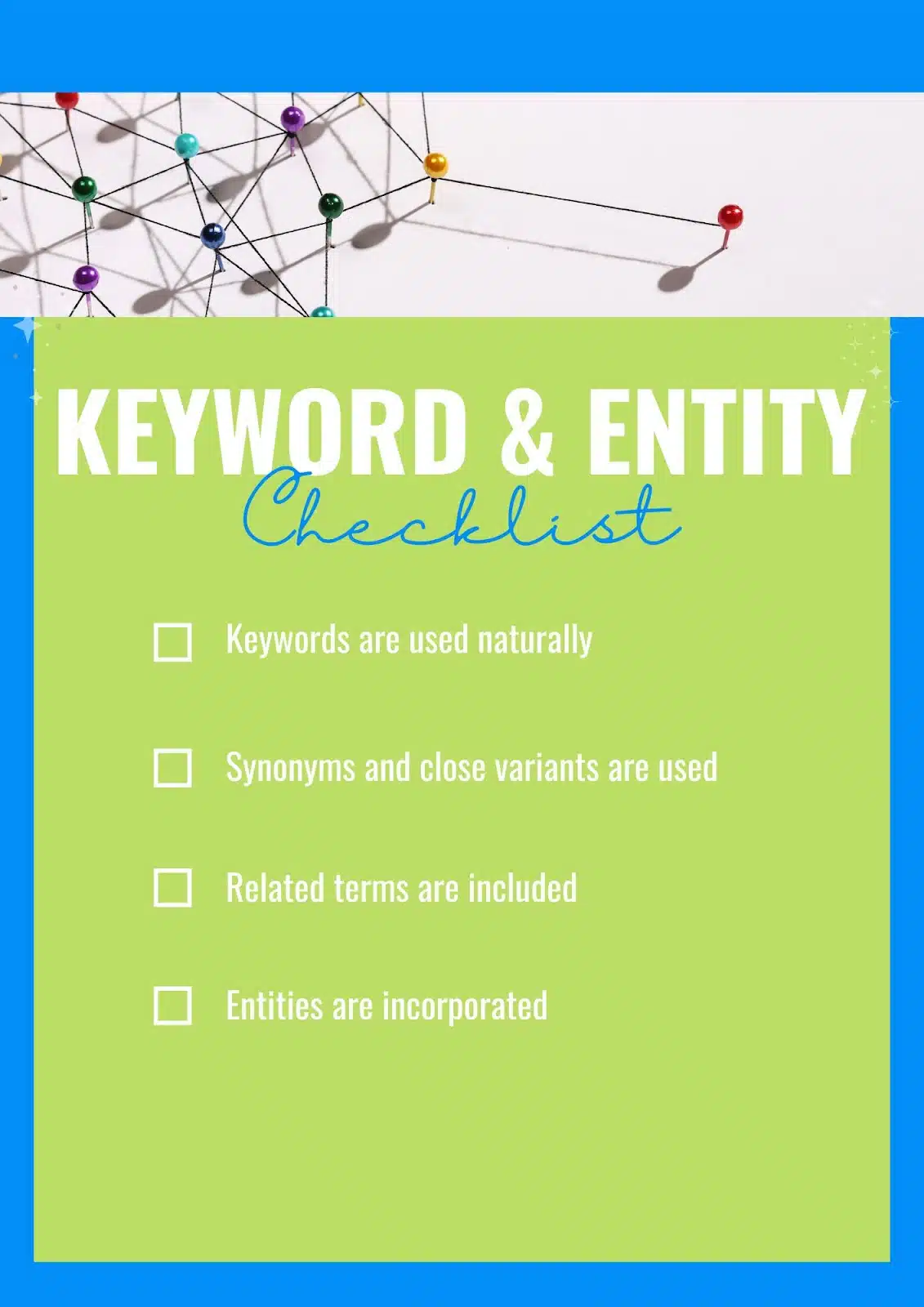

Step 5: Consider E-E-A-T
Having strong E-E-A-T (experience, expertise, authoritativeness and trustworthiness) can greatly impact SEO success. Trustworthy, authoritative content should:
- Demonstrate experience: Use author bios, “checked by” references or personal experience to show the author and publisher entities behind your content. Use first-hand experience and first-person pronouns where appropriate, this has been found to have a strong correlation with SEO success in a recent study.
- Display expertise: Create in-depth, accurate content that shows you really understand a topic. Go beyond the surface level and add insight and information that only subject matter experts are likely to know.
- Build authoritativeness: Content must be on-topic to help build your authority in a certain field. Create something that others are likely to reference for an extra authority boost.
- Be trustworthy and transparent: Keep things straightforward and open. Don’t try to mislead or make claims you can’t support. Be clear about who is behind the content.
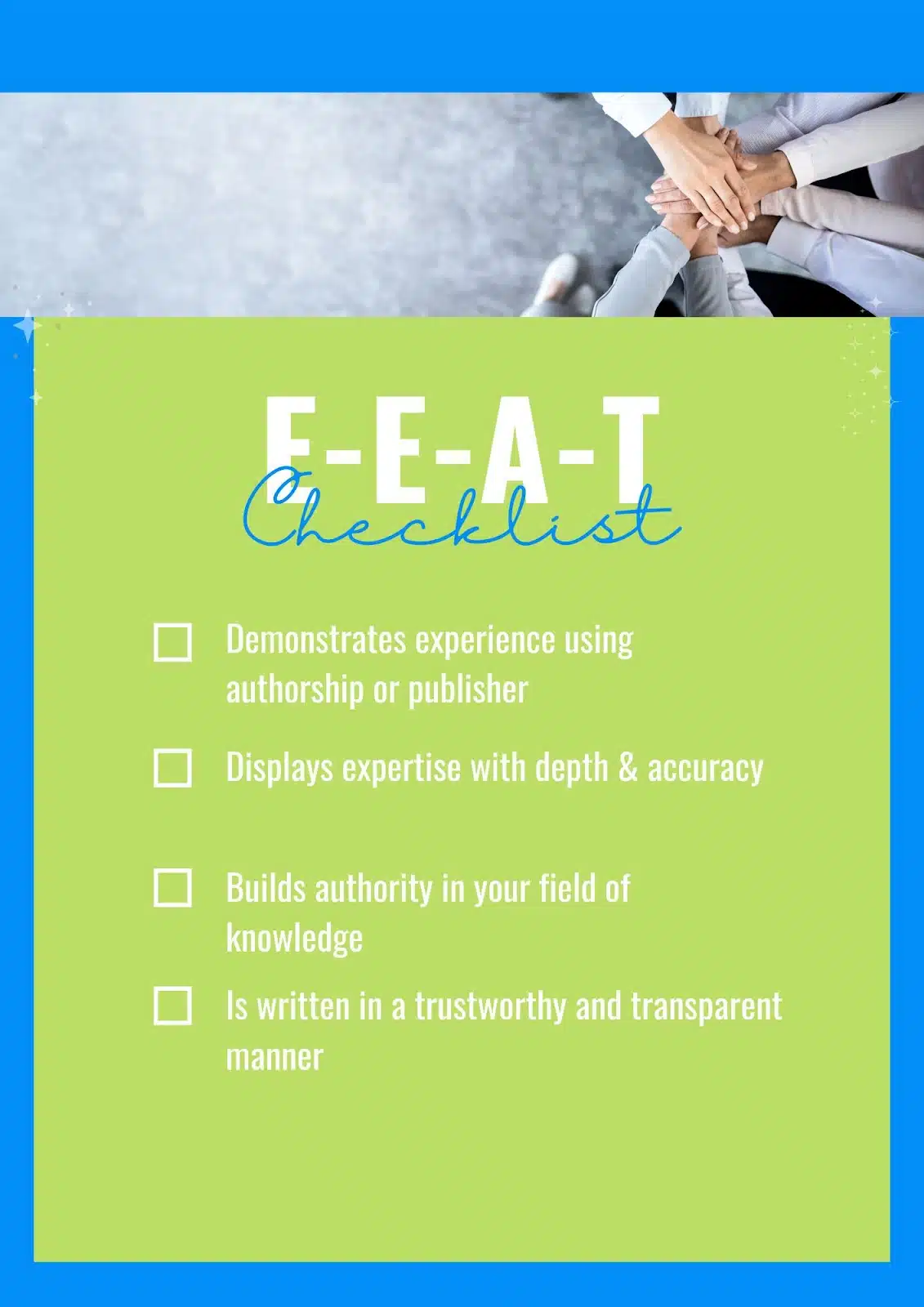

Depending on your topic, other media may help to enrich your content for users and improve your SEO efforts.
Check the search engines to see what type of content they are already ranking for a certain search query. Perhaps video or visual content is prevalent.
If so, make sure your content includes some original video or imagery too, where possible. Consider whether your pages would benefit from:
- Images: Imagery can inspire and enhance text-heavy content. However, stock images can negatively impact search rankings, so use images thoughtfully rather than just to fill space.
- Diagrams and graphics: Sometimes words aren’t enough or can be complemented by a graphic or diagram. Take instructions for example, it can be easier to see how something works than to simply read the words.
- Video: Ideal for “how to’s”, showing a product or process in greater detail or helping users to see movement of any kind. Video can be a really powerful way to enhance content if used appropriately.
- Audio: Less widely used, audio elements can add to storytelling or create an emotional response to enrich written content.
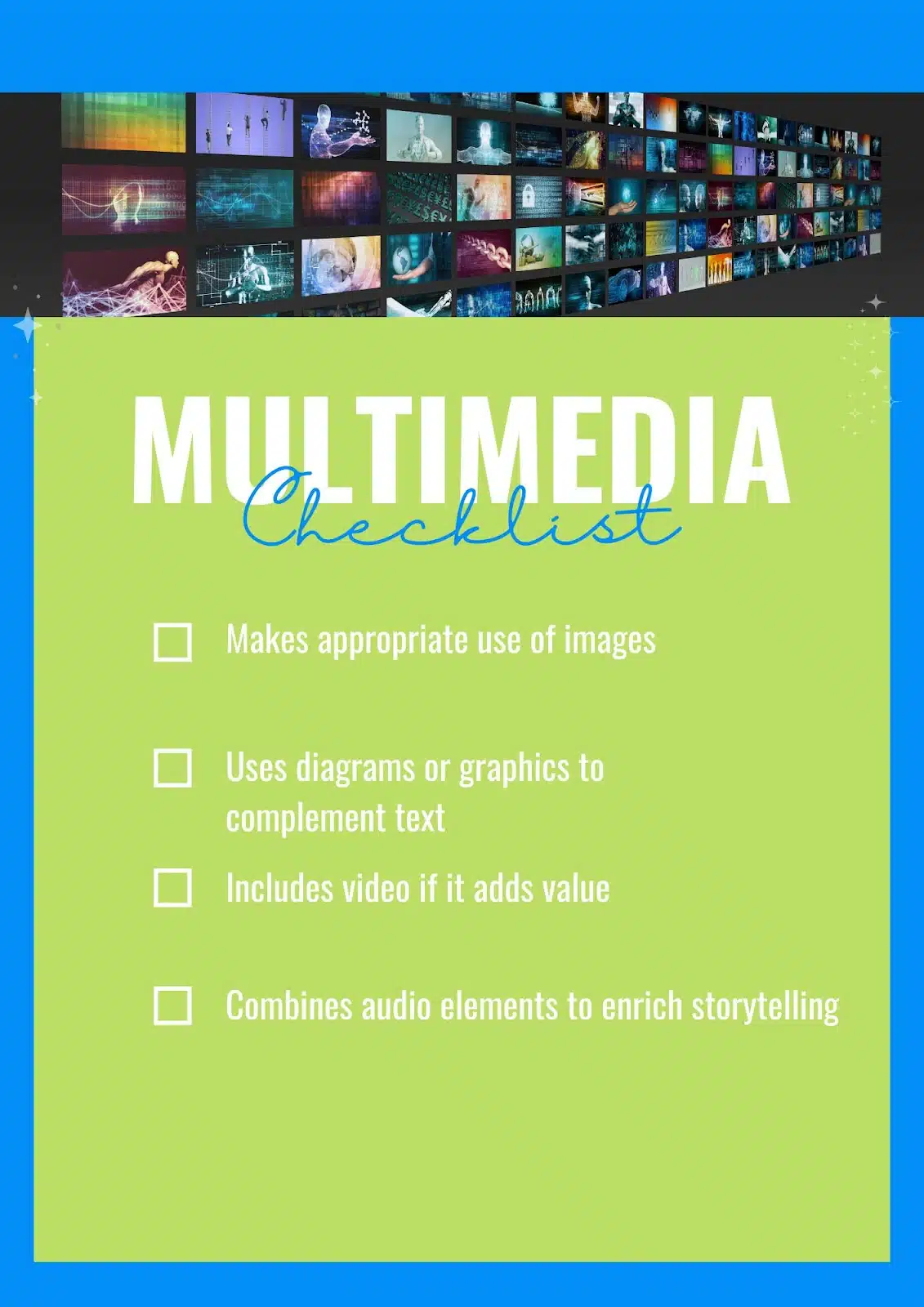

Step 7: A piece of a bigger picture
Every piece of content is related to others. Great content will add to your area of expertise and will relate to other pieces of content on your site.
It will also draw references from other trusted resources on a topic. And in time, it might become a piece that others refer to.
While creating your content, it’s important to consider:
- Internal linking: How does this piece relate to other content you have produced? Have you created internal links, connected related pages and made it easy for readers to navigate to other pages that would enhance their journey?
- External linking: Are any facts, statistics or quotes backed up by links to their original sources? Are there other useful resources by experts that might provide further detail for your readers?
- Backlink potential: Even at the early stages, consider your audience and whether there is any potential to gain backlinks from other websites. Have you included original information or quotes? Perhaps you have a unique perspective, new expertise or even artwork that sets your content apart.
- Is it shareable?: Social shares can help you reach a larger audience. Have you created something others would want to share, and have you made it easy for them to do so?
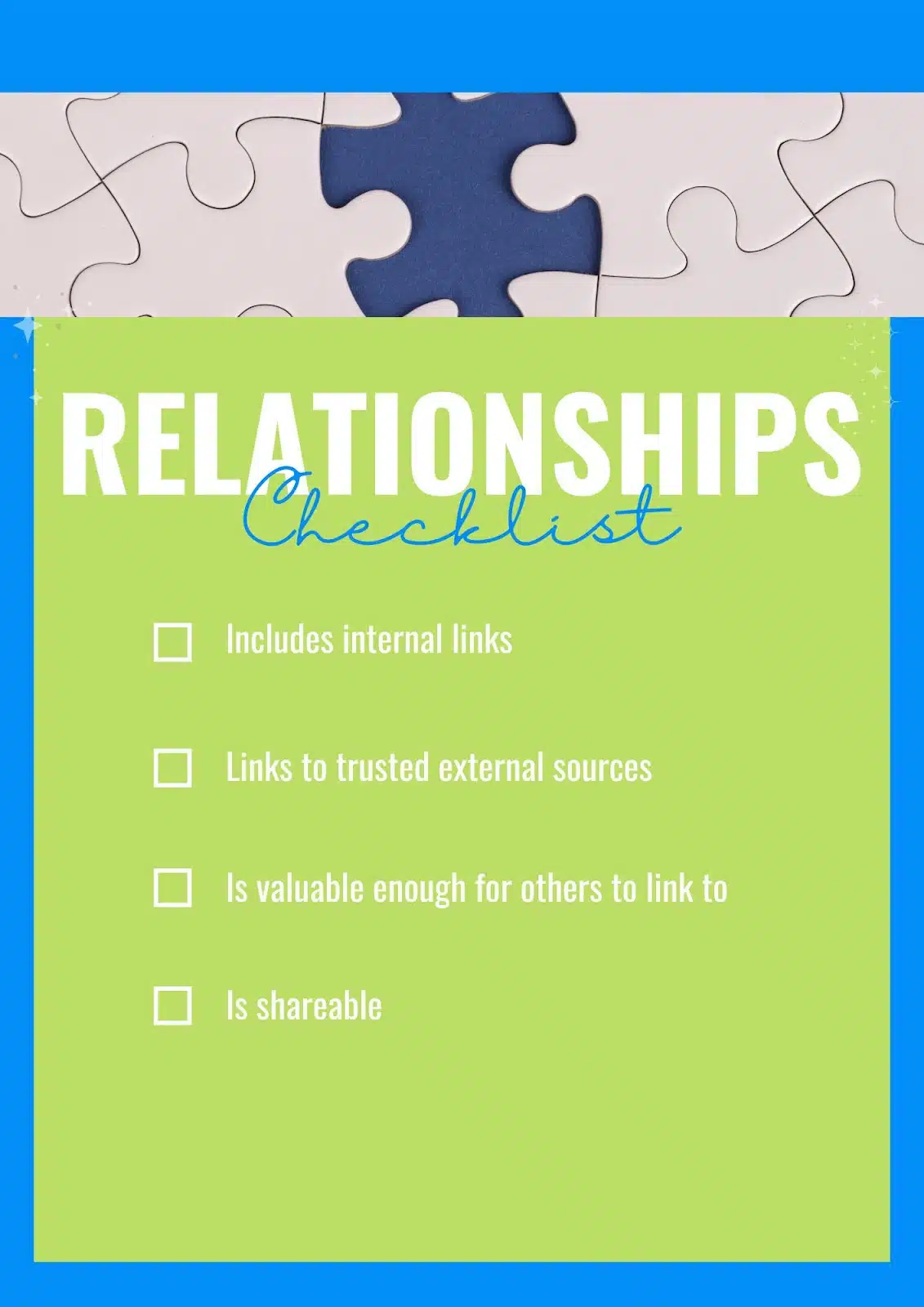

Step 8: Technical SEO content issues
While technical SEO issues can affect your whole site, there are some specific ones to look out for to help optimize for SEO performance. As a quick overview, you should make sure:
- Content loads quickly: Optimize images and ensure other media files aren’t slowing down the content’s performance.
- Displays well on mobile: With a responsive site, this shouldn’t be too much of an issue. But check how your content looks and responds on mobile. You might need to break down large paragraphs of text or improve formatting. Make sure all elements can still be clicked easily.
- Page is included in the site’s XML sitemap: This helps search engine crawlers find and understand the content.
- URLs are descriptive: Include wording rather than non-descript numbers or letters in the URLs.
- Content passes Core Web Vitals: An indication of user experience and a ranking factor, you should check and resolve any issues with core web vitals.
- Includes appropriate schema markup: Add markup for entities, FAQs, reviews, article elements like authorship and publishing date. Keep it relevant, though; don’t include structured data markup that doesn’t relate to the content on that page.
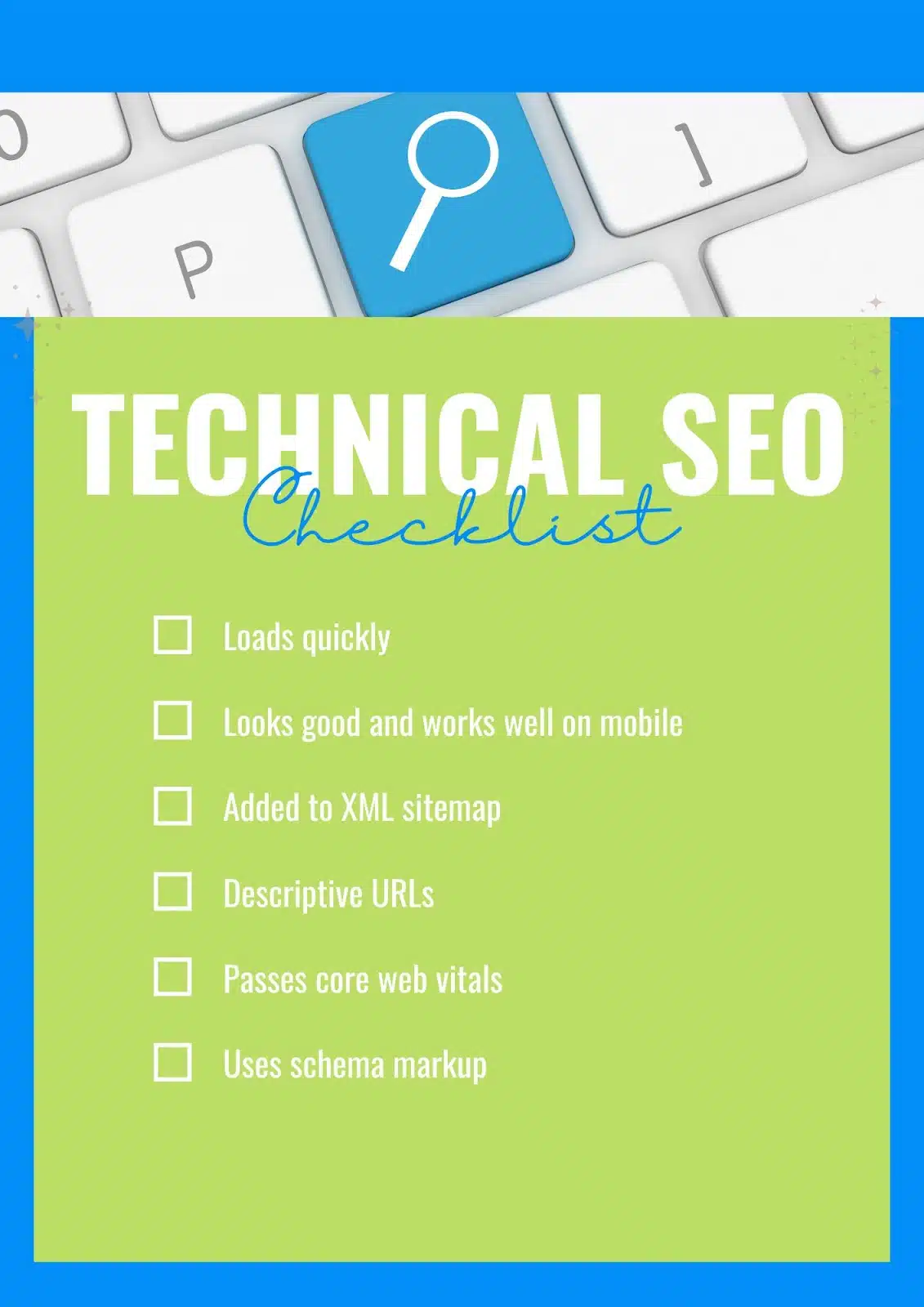

Step 9: Review and rework
The best content is never finished. The world changes fast, and that leaves content online that is dated, inaccurate or, at worst, misleading. It’s important to be aware of this and revisit your content often.
Here are some of the key times to evaluate your content:
- Create a schedule: It might be as simple as having your own set timescale for reviewing content. Depending on how fast-moving your industry is, that might be monthly, quarterly or even annually.
- Keep an eye on industry updates: Any big changes in your industry could cause information to become inaccurate or even create new areas that should be covered in your content.
- Evaluate after internal changes: Updates within your company can have an impact, too. Perhaps you’ve stopped selling a particular product, changed your internal focus or added new services to your offering. Good content should reflect this accurately.
- Assess after Google algorithm updates: When search engine algorithms have updated, it’s always worth checking how this has impacted your content. Look at other things to do after a core update for more information.
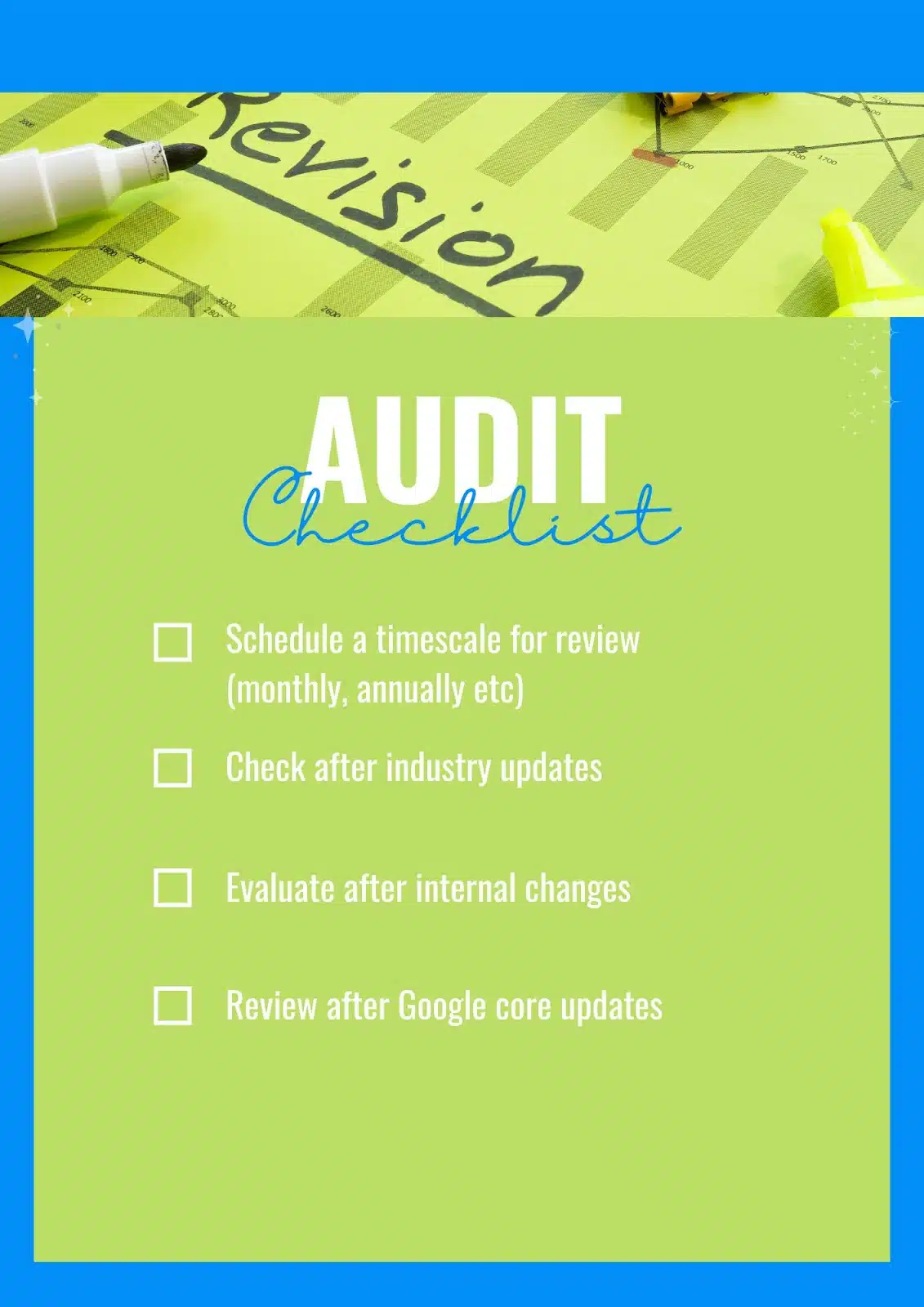

Why content quality matters
Today’s search results are in danger of being cluttered with AI-generated content.
It’s also more competitive than ever because it’s possible to create faster than ever. That’s why the quality of your content matters. If it’s high quality and helpful, it’s likely to:
- Rank better and drive more traffic to your website.
- Fulfill a need so users will be satisfied and may progress through their user journey.
- Add to your authority to build trust and credibility in your business both online and offline.
- Increase brand visibility by slowly building up your presence and creating something valuable in your niche.
- Gain your audience’s trust by being genuinely helpful, so even if you’re not clinching a sale right now, you’re likely to be the place they go when they’re ready to take the next step.
Ultimately, quality content is about your reputation. But it’s also crucial for gaining a competitive edge in the search engine results pages.
Next time you’re optimizing content, remember to think past keyword ideas and take the big picture into account.
Contributing authors are invited to create content for Search Engine Land and are chosen for their expertise and contribution to the search community. Our contributors work under the oversight of the editorial staff and contributions are checked for quality and relevance to our readers. The opinions they express are their own.












